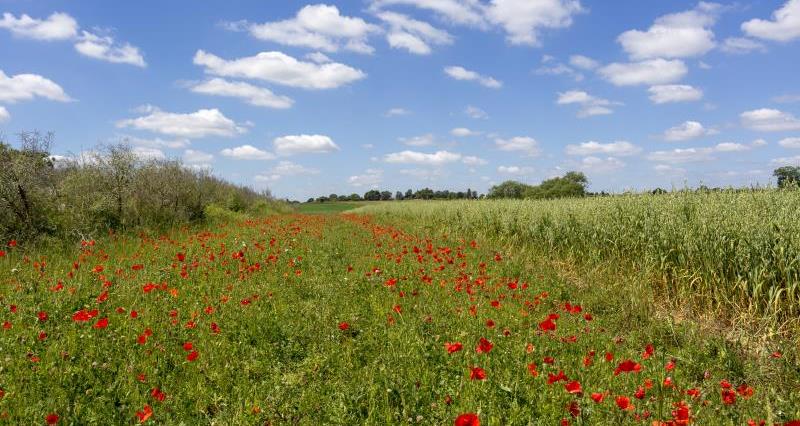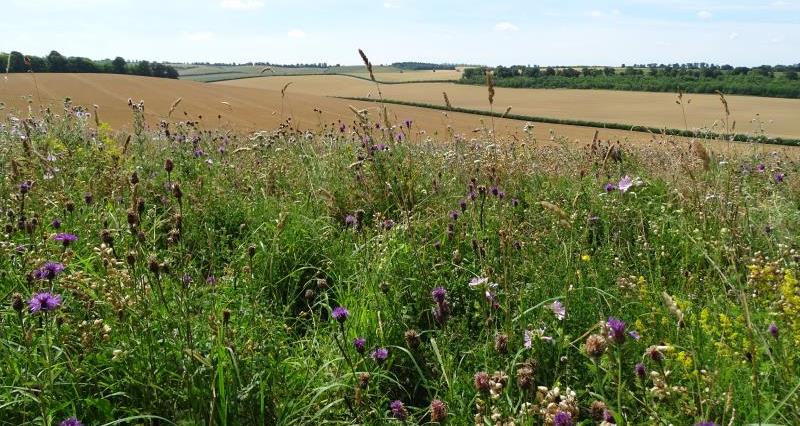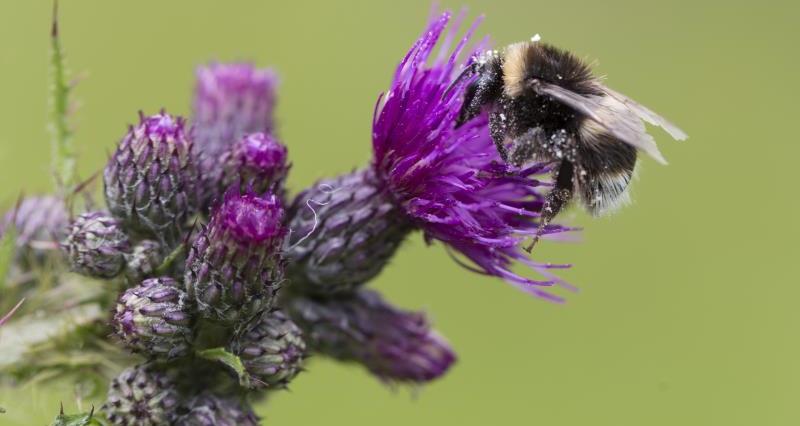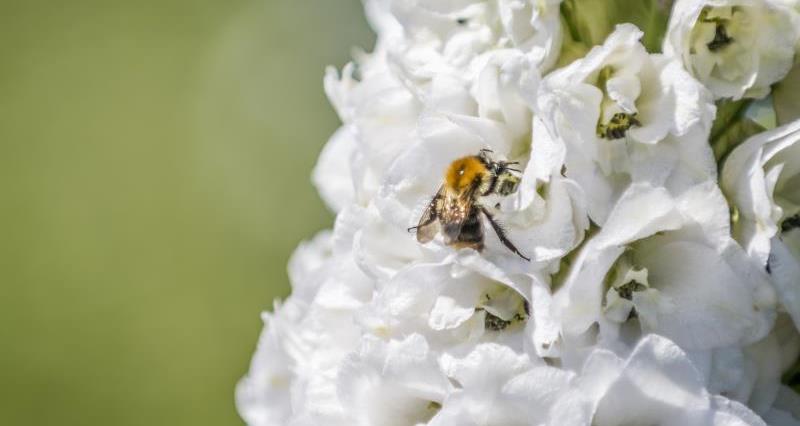Provide summer food
Pollinators require both pollen and nectar‑rich flowers to provide food throughout their nesting season from March until September. Crops contribute habitat and nectar supply for certain parts of the year and flower mixes provide food sources for pollinators when crops aren’t flowering.
- Nectar from flowers is high in sugar and is used by pollinators as a source of fuel. The sugar attracts pollinators to the plant. Good flower species for nectar include knapweed and scabious
- Pollen provides protein and nutrients and is used by pollinators to feed their young. Pollen is also used by the plant for fertilisation to produce seed. Good sources of pollen include: red clover, yellow rattle and birds foot trefoil.

If you already have grassland with a range of native flowers on your farm, priority should be given to protecting and expanding this where possible.
On a livestock farm, you can also consider increasing plant diversity sown in grass leys on areas such as headlands or where there will be short runs when mowing. Legumes such as clovers can reduce use of inorganic fertiliser, boost protein and mineral supply for livestock and benefit soil structure. Some flowering herbs, such as plantains and chicory, can be productive in grass leys.
Alternatively, you can establish small flower‑rich areas. This may include encouraging native plants on less fertile grassland areas or cultivating margins to stimulate germination of arable plants in the seed bank.
Flower‑rich margins on at least 1% of arable land will support beneficial insects and a wealth of wildlife that feeds on insects. Assess if this is best done by allowing arable plants in the seedbank to germinate, establishing perennial margins with a grass and wildflower mix, or using nectar flower mixtures.
Improving the linkages between these features on your farm will also help wildlife move across the landscape.

Provide food in spring and autumn
Many pollinators are active from early spring until late summer. Many conservation efforts focus on providing pollen and nectar for workers in the summer, although many pollinators are probably more sensitive during the period when they are forming nests in the spring.
For example, helping bumblebee queens early in the year is rewarded as it encourages the foundation of bumblebee colonies and helps establish a robust local population which will pollinate crops later in the year.
By protecting, encouraging or planting a variety of spring, summer and autumn flowering plants you can provide excellent pollinator food sources.
Landscape features are also important to pollinators. You can help pollinators by:
- Managing hedgerows to boost flowering of hawthorn and blackthorn before other pollen and nectar sources are available by trimming on a two or three‑year rotation.
- Planting suitable nectar trees where the landscape is suitable.
Provide a home
Wild pollinators also need sites to create nests and for hibernation.
Some species prefer to nest above ground in thick vegetation, so hedgerows and areas of tussocky grass are valuable. Others nest underground, often using disused mammal holes, so creating an area where small mammals can create burrows (for example dry ditches or banks of earth) will benefit pollinators as well as the small mammals.
Some pollinator species also hibernate. Some research suggests that pollinators prefer to hibernate in north‑facing banks, where they dig into vegetation and loose soil. In this soil they form a small chamber, in which they spend the winter.

